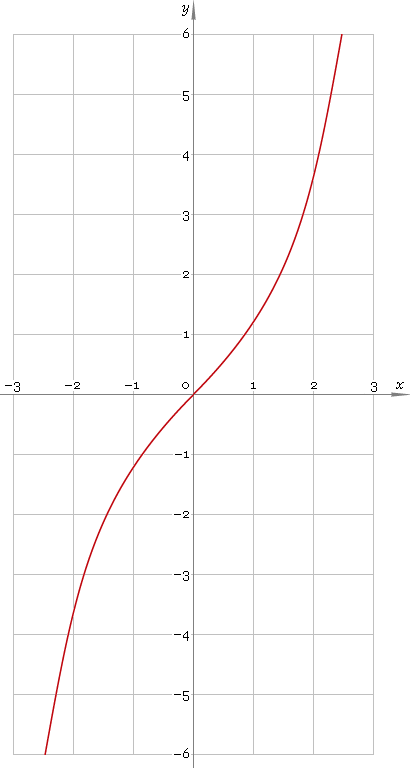| LIBROW | ® |
| Products | Solutions | Vehicles | Articles | Inquiry | Contacts | My account |
Article 11 — Appendix A.27
sinh or sh — hyperbolic sine function
Category. Mathematics.
Abstract. Hyperbolic sine: definition, plot, properties and identities.
Reference. This article is a part of Librow scientific formula calculator project.
Limited offer
Professional Librow Calculatorvisit
for free
- Bessel functions
- gamma function
- complex numbers
7.4 MB for Windows
1. Definition
Hyperbolic sine is defined as
sinhx ≡ (ex − e−x) /22. Plot
Hyperbolic sine is antisymmetric function defined everywhere on real axis. Its plot is depicted below — fig. 1.
 Fig. 1. Plot of the hyperbolic sine function y = sinhx.
Fig. 1. Plot of the hyperbolic sine function y = sinhx.
Function codomain is entire real axis.
3. Identities
Base:
cosh2x − sinh2x = 1Connection to exponential function:
sinhx + coshx = excoshx − sinhx = e−x
By definition:
sinhx ≡ 1 /cschxProperty of antisymmetry:
sinh−x = −sinhxHalf-argument:
sinh(x/2) = √[(coshx − 1) /2]sinhx = 2 tanh(x/2) /[1 − tanh2(x/2)]
Double argument:
sinh(2x) = 2 sinhx coshxTriple argument:
sinh(3x) = 4 sinh3x + 3 sinhxQuadruple argument:
sinh(4x) = 4 sinh3x coshx + 4 sinhx cosh3xPower reduction:
sinh2x = (cosh(2x) − 1) /2sinh3x = (sinh(3x) − 3 sinhx) /4
sinh4x = (cosh(4x) − 4 cosh(2x) + 3) /8
sinh5x = (sinh(5x) − 5 sinh(3x) + 10 sinhx) /16
Sum and difference of arguments:
sinh(x + y) = sinhx coshy + coshx sinhysinh(x − y) = sinhx coshy − coshx sinhy
Product-to-sum:
sinhx sinhy = [cosh(x + y) − cosh(x − y)] /2sinhx coshy = [sinh(x + y) + sinh(x − y)] /2
Sum-to-product:
sinhx + sinhy = 2 sinh[(x + y) /2] cosh[(x − y) /2]sinhx − sinhy = 2 sinh[(x − y) /2] cosh[(x + y) /2]
4. Support
Hyperbolic sine function sinh or sh of the real argument is supported by free version of the Librow calculator.
Hyperbolic sine function sinh or sh of the complex argument is supported by professional version of the Librow calculator.
5. How to use
To calculate hyperbolic sine of the number:
sinh(-1);To calculate hyperbolic sine of the current result:
sinh(rslt);To calculate hyperbolic sine of the number x in memory:
sinh(mem[x]);
|
|||||||||||||
|
|||||||||||||

